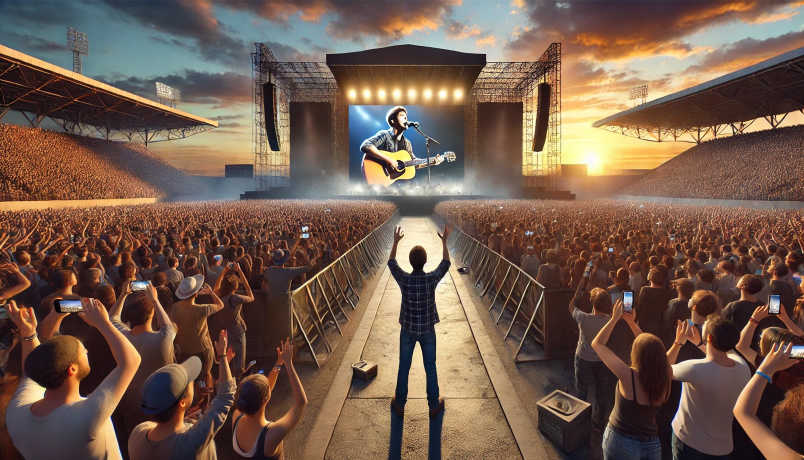
Technology is involved in almost every aspect of live music today, and for good reason.
It seems that with every other concert performed, new, mercilessly creative light shows or even pyrotechnic displays are added in order to capture the audience’s attention.
One of the many modern wonders that has enhanced the experience of watching concerts is the jumbotron.
While previously, these large screens were mostly linked with sports centers, they have now made their way into tuned music festivals, stadium tours, and even small outdoor gatherings.
Because jumbotrons can enlarge and magnificently portray every detail, they are no longer simply screens and are instrumental in contemporary live music culture.
1. Serving Fans on Different Levels
Be it the front row or the most affordable seating, jumbotrons guarantee that you will never miss out on the live performance.
With the help of jumbotrons, every detail is captured as it is projected on a giant display. From instrumental solos to the artist’s facial expressions, every component is showcased effortlessly.
For more significant venues, such as stadiums, this becomes necessary as it adds a personal touch instead of feeling like a remote glimpse at a performance one could attend.
2. Augmenting Visual Storytelling with Live Effects
Concerts nowadays are not simply performances but rather spectacular shows comprising music, lights, graphics, and videos that all happen simultaneously.
Jumbotrons enable storytelling through visuals by blending live video feeds with real-time effects.
Think of a guitarist where the camera focuses on their fingers strumming the guitar, and you see them enact in slow motion or dramatic replay with psychological appendage.
Each of these distinct ideas transforms the screen into the artist’s imagination, adding the emotional impact of every song.
3. Creating Epic Crowd Moments
Jumbotrons, which elevate the displays to a new level, facilitate synchronized crowd dancing and massive sing-alongs. The audience themselves become the show.
Many camera operators do not miss the action with the close-up and zoom features of the audience displaying signs, in costumes, or passionately singing, which is streamed to the entire auditorium.
This creates a new level of excitement where the audience becomes aware of the fact that they are part of something rather bigger than them.
Through this, it boosts the participation rate from the audience, as they expect to get at least a few seconds of attention from everyone in the audience.
ALSO READ: Thrilling Tunes for Snow Adventures: 5 Tips for Building the Perfect Timbersled Playlist
4. Merging On-Site and Remote Viewers
Hybrid concerts—where fans either attend the concert in person or stream from home—are becoming more popular.
Footage from the screen can be incorporated directly into livestreams so online viewers can enjoy the same curated visuals as the audience present at the concert.
This type of content serves a dual purpose of helping artists maintain cohesive identities across different platforms.
5. Spontaneous Artist and Fan Interaction
Some artists have taken the use of jumbotrons a step further by embracing them as interactive platforms.
These performers may display real-time fan polls during the concert, live social media feeds, or even accept requests in real-time.
This sort of engagement transforms concerts from a one-sided experience into a two-sided one.
Such experiences enhance the bond between the artists and the fans.
Conclusion
The development of live music experiences is intertwined with the development of technology. Jumbotrons play an important role in this development.
The combination of fan participation, visual artistry, and immersive storytelling is making these giant screens enhance the inclusivity, visual magnificence, and interactivity of concerts.
So, whether you are at a festival or stadium gig, the probability of the jumbotron exhibiting more than just the show is highly likely.

